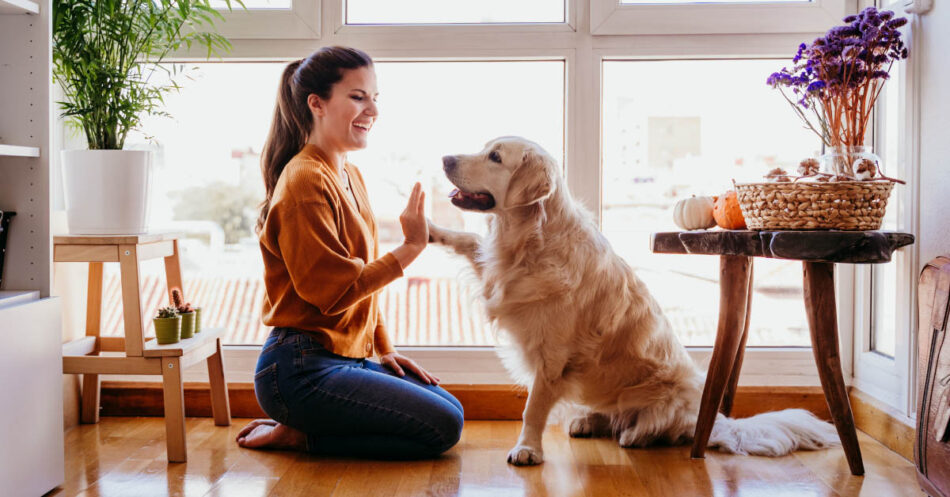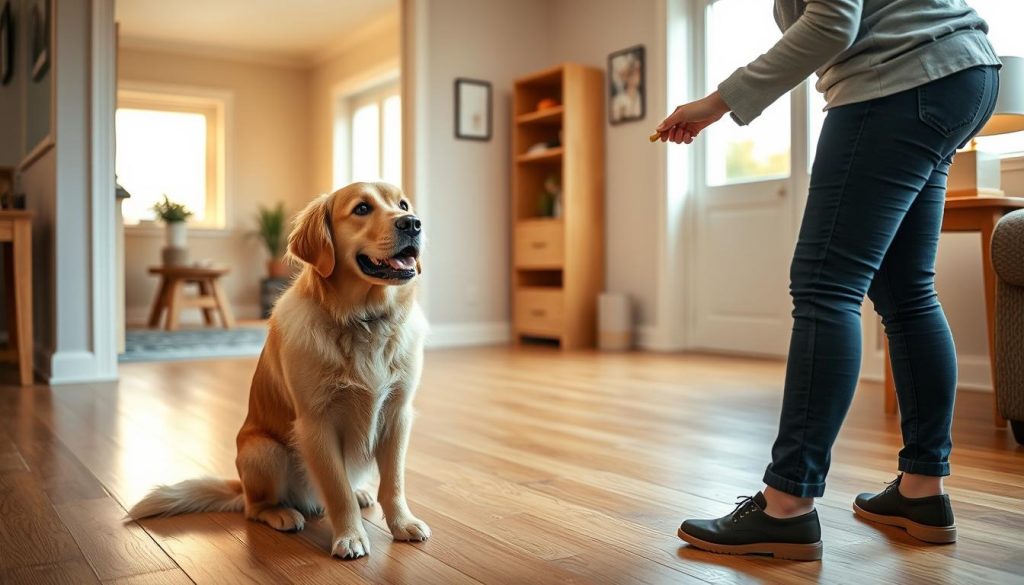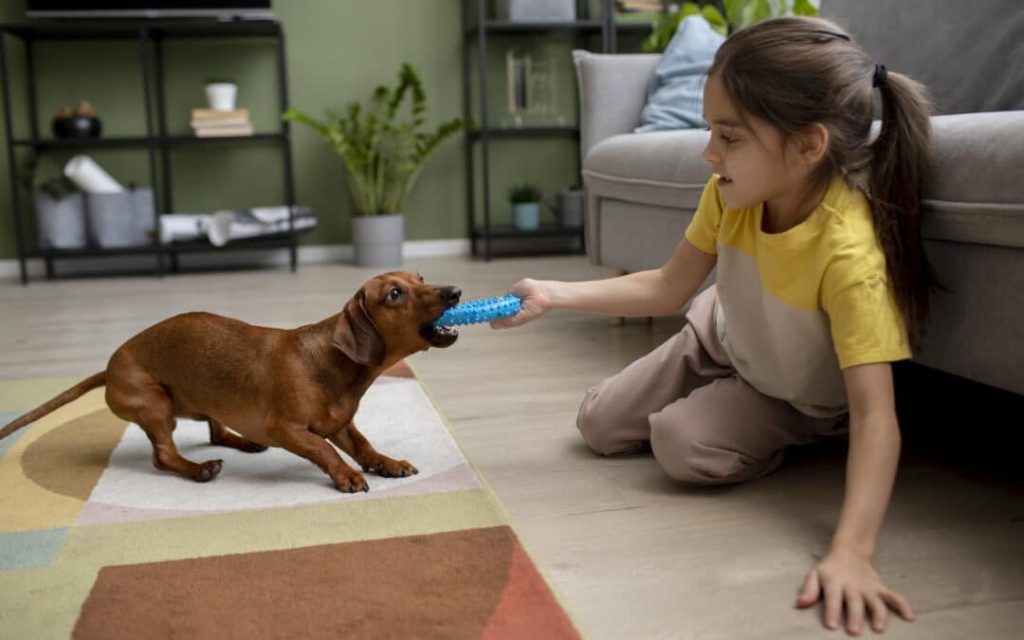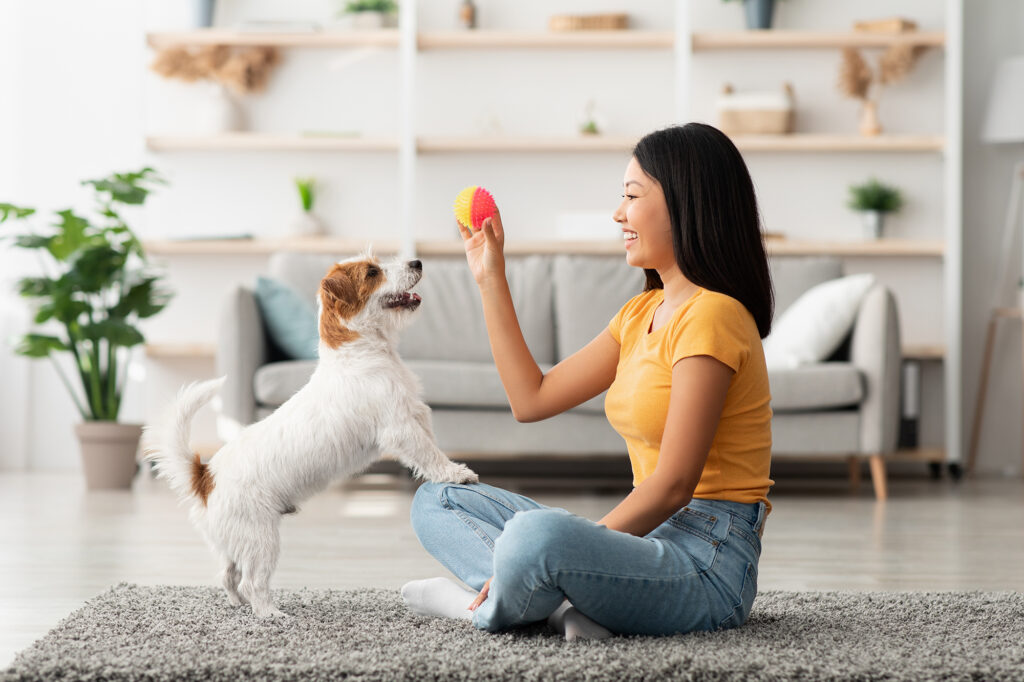Training your dog at home is not only a cost-effective solution but also a wonderful way to strengthen the bond between you and your furry friend. While professional trainers can provide guidance, many dog owners successfully train their pets at home using patience, consistency, and positive reinforcement. Whether your dog is a playful puppy or an adult with some behavioral issues, home training can help instill good habits, obedience, and a sense of security. Here’s a comprehensive guide on how to train your dog at home effectively.

The first step in home training is to establish a safe and comfortable environment for your dog. Remove distractions, such as loud noises or other pets, during training sessions. Choose a quiet area in your home where your dog feels at ease. Training in a calm and familiar environment helps your dog focus better and associate learning with positive experiences.
Every dog has unique motivations, whether it’s treats, toys, praise, or playtime. Understanding what drives your dog is essential for effective training. Treats are commonly used for positive reinforcement because they offer immediate rewards for desired behaviors. However, some dogs respond better to affection, verbal praise, or their favorite toys. Identify what excites your dog and use it as a reward during training sessions.
Before attempting advanced tricks, teach your dog basic commands like “sit,” “stay,” “come,” “down,” and “leave it.” These commands form the foundation of good behavior and make managing your dog easier in daily life. Begin with short training sessions of 5 to 10 minutes, gradually increasing the duration as your dog becomes more comfortable. Repetition and consistency are key; practice these commands daily until your dog responds reliably.
- Hold a treat close to your dog’s nose.
- Slowly move the treat above your dog’s head. As their head follows the treat, their bottom will naturally lower.
- Once your dog sits, immediately give the treat and praise them.
- Repeat several times, adding the verbal cue “sit” once your dog starts associating the action with the word.

Positive reinforcement is one of the most effective training methods. Rewarding your dog for good behavior encourages them to repeat it. Avoid punishment, as it can create fear and anxiety, hindering progress. Instead, focus on praising and rewarding the behaviors you want to see. For instance, if your dog comes when called, offer a treat and enthusiastic praise to reinforce that behavior.
Consistency is crucial in home dog training. Use the same commands, gestures, and rewards every time. All family members should follow the same training techniques to avoid confusing the dog. Consistency helps your dog understand expectations and accelerates learning. Set a regular training schedule and integrate short sessions throughout the day to reinforce learning without overwhelming your dog.
Training at home isn’t just about obedience; socialization is equally important. Expose your dog to different people, animals, sounds, and environments gradually. Socialization helps prevent behavioral problems such as aggression or excessive fearfulness. You can start small by inviting friends over or taking short walks in the neighborhood, rewarding calm and friendly behavior during these interactions.

Home training allows you to address unwanted behaviors such as chewing, barking, jumping, or aggression. Identify the root cause of the behavior and redirect it positively. For example, if your dog jumps on guests, teach them to sit calmly before greeting someone. Consistently rewarding good behavior while redirecting bad habits helps your dog learn acceptable ways to behave.
Training takes time and patience. Some dogs learn quickly, while others require more repetition. Avoid getting frustrated and maintain a calm, encouraging attitude. Keep sessions fun with games, treats, and praise to make learning enjoyable. Ending each session on a positive note reinforces your dog’s desire to participate in future training.
Training your dog at home is a rewarding experience that builds trust, respect, and a lifelong bond. By creating a positive environment, understanding your dog’s motivations, using consistent commands, and employing positive reinforcement, you can teach your dog essential skills and correct behavioral issues effectively. Remember, patience and consistency are your best tools—every small step counts toward raising a well-behaved, happy, and confident dog.

